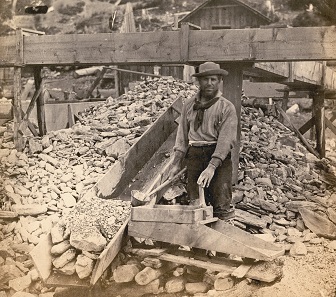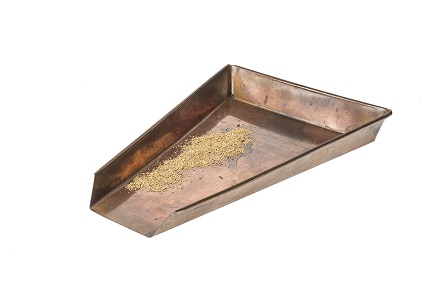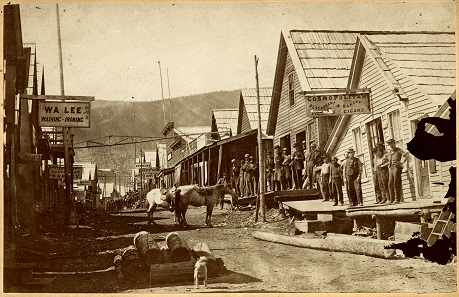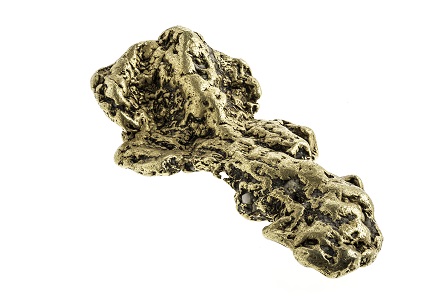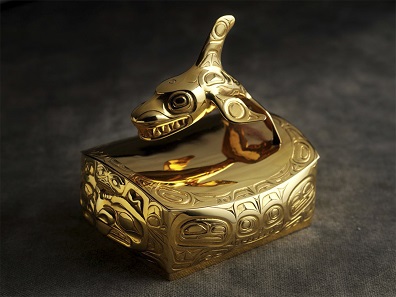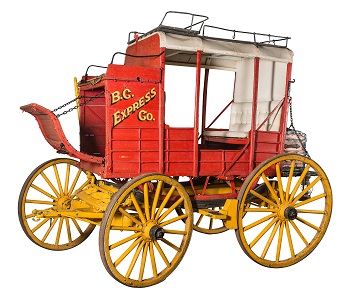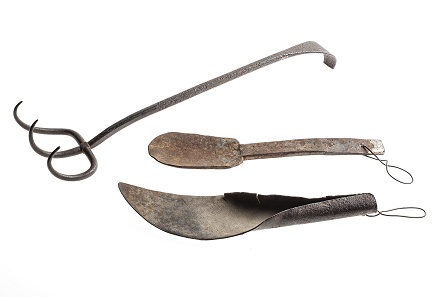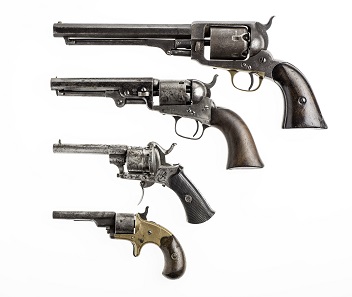November 10, 2016 – The Canadian Museum of History is aiming to strike gold with their current exhibition examining the race for riches on Canada’s West Coast. ‘Gold Rush! – El Dorado in British Columbia’ taps into a much-mythologized vein of history that encompasses gold rushes in California, Australia and Canada in the 19th century.
Miner using a rocker box, Barkerville, 1868. Image A-00353 courtesy of the Royal BC Museum and Archives.
Organized by the Royal BC Museum, in collaboration with the Canadian Museum of History, the exhibition illustrates how the legend of El Dorado, a source of endless gold said to be hidden in the New World, has driven exploration, conquest and colonization for 500 years.
Wheel and flumes at the Davies claim on William’s Creek, 1867. Image A-00558 courtesy of the Royal BC Museum and Archives.
The British Columbia gold rush that began in 1858 stood out, however, because First Nations as well as immigrants from China and other countries played such key roles in how the story unfolded. Thousands of people of diverse social and ethnic origins, chasing dreams of wealth and a better life, helped shape the Canada we know today.
Blow pan, for separating fine gold from sand. Image RBCM 964.3495.6a courtesy of the Royal BC Museum and Archives.
“The Canadian Museum of History is pleased to collaborate with the Royal British Columbia Museum in presenting a dazzling exhibition that is both universal and uniquely Canadian,” said Jean-Marc Blais, Director General of the Canadian Museum of History. “The British Columbia gold rush is a highly interesting period of our shared history and we are proud to have the opportunity to present it to our visitors.”
Barkerville, 1868. This photo depicts the main street of Barkerville just before the 1868 fire that destroyed the town. Image F-00305 courtesy of the Royal BC Museum and Archives.
That the gold rush, and not the railway, first connected the Canadian West Coast to the rest of the world is just one of the intriguing storylines explored in the exhibition. Another is how the promise of riches attracted the regions’ first Chinese and African Americans from California, along with other settlers from across North America, Australia, Europe, Asia and South America.
The Turnagain Nugget is the largest existing gold nugget ever found in British Columbia: it weighs 1,642 grams (52 troy onces) and is approximately 4.2 cm high, 18.1 cm wide and 9.2 cm deep. Image RBCM 990.65 courtesy of the Royal BC Museum and Archives.
The exhibition showcases 280 artifacts, including the spectacular, 1,642 gram Turnagain Nugget, the largest existing gold nugget from British Columbia.
Haida box by Bill Reid, 1971. Image RBCM 13902-a,b courtesy of the Royal BC Museum and Archives.
An exquisite gold box by Haida artist Bill Reid demonstrates the influence of gold on culture through the ages.
British Columbia Express Company stagecoach. Recovered from the bush, this stagecoach has been restored by the Historic O’Keefe Ranch, founded during the British Columbia gold rush. Courtesy of the O’Keefe Ranch & Interior Heritage Society.
A real stagecoach restored by the Historic O’Keefe Ranch in Vernon, BC evokes an era of adventure and exploration. Authentic miners’ tools and personal belongings from the gold rush, modern objects such as a $1 million gold Maple Leaf coin from the Royal Canadian Mint and a set of Olympic and Paralympic medals from the 2010 Vancouver Winter Games show the timeless allure of the glittering metal.
Hand-forged mining tools. Image RBCM 2014.188.1 and 2014.188.2 courtesy of the Royal BC Museum and Archives.
The objects and information presented illustrate the great symbolic and monetary value of this malleable precious metal, as well as its uses in science, technology and medicine.
Revolvers. Image RBCM 2012.242.2, 972.213.1, 965.2491.1a-c, 966.26.1 courtesy of the Royal BC Museum and Archives.
They show gold to be a catalyst for personal and political conflict, an inducement for immigration and a cause of environmental destruction. They explore how gold has been a vector for racism, violence and disease, a motive for betrayal and an incentive for peace.
Gold pan, Barkerville. Blackened with soot to make gold more visible. Image RBCM 972.4.5 courtesy of the Royal BC Museum and Archives.
‘Gold Rush! – El Dorado in British Columbia’ is at the Canadian Museum of History until January 15, 2017. This exhibition is organized by the Royal BC Museum, in collaboration with the Canadian Museum of History.
To learn more about the exhibition go to the museum’s website.
You can learn much more about the Californian gold rush in our archive. Don’t miss the Gold rush serie in three parts: Part 1, Part 2, Part 3!
And you will also enjoy the visit to the mints of San Francisco: Part 1 and Part 2.




